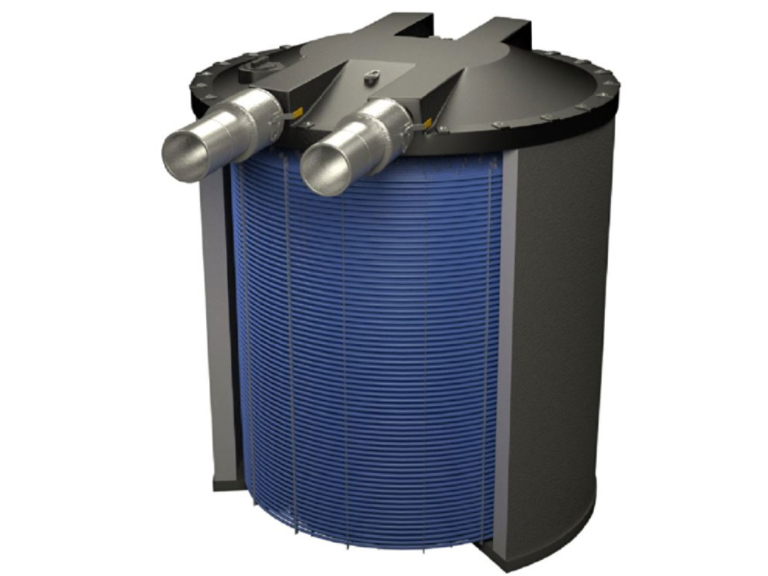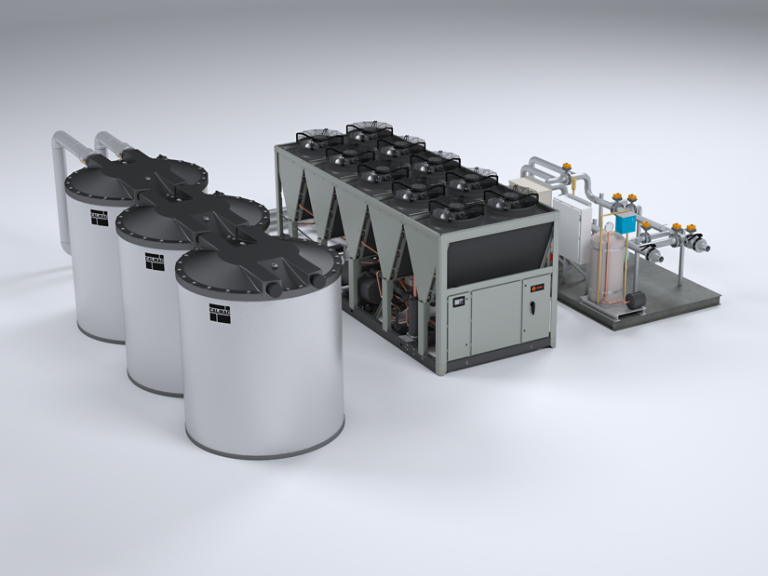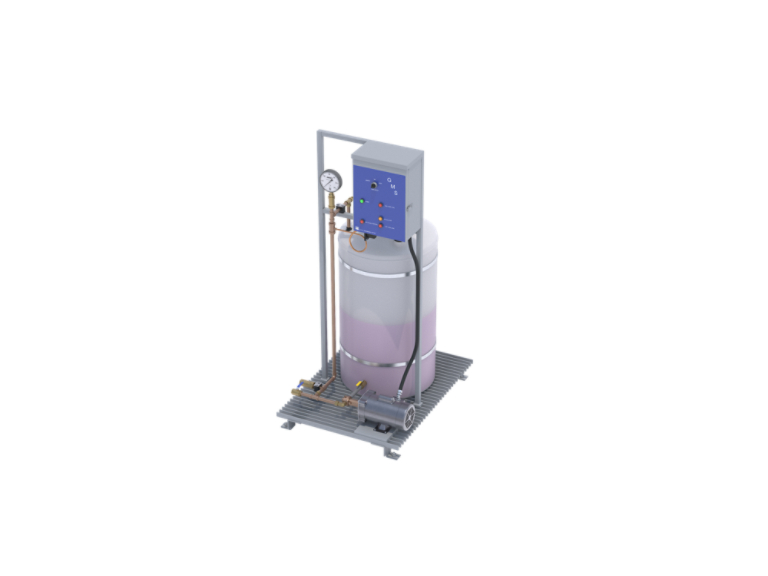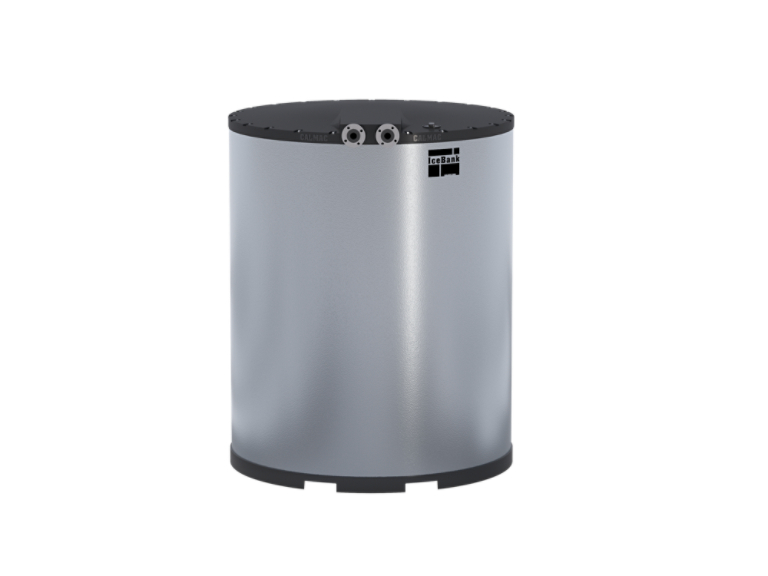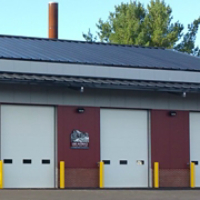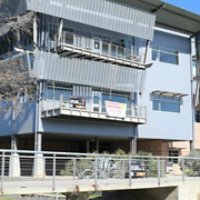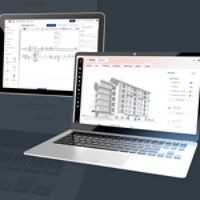- Thermal energy storage provides a complete solution with building-level controls and digital services.
- Thermal energy storage tanks are easy to integrate, come with system design guidance, control sequences, and operation dashboards, delivering reliable performance and complete control. Visit Trane Design Assist.
- Buildings with thermal energy storage can add electric batteries for a hybrid energy storage system, offering cost-effectiveness, longer lifespan, better cycle management, and enhanced energy flexibility for resilience.
- Made with durable polyethylene, thermal energy storage tanks have an expected 40-year lifespan with proper maintenance.
Overview
A flexible way to manage electric demand. A smarter way to help save on energy costs.
Modernize your building's thermal management with Thermal Energy Storage. Help reduce peak demand, lower energy costs, and support renewable energy usage.
-
Proven Performance with Ice-Based Thermal Storage Tanks
Thermal energy storage (TES) is a reliable solution for cost-effective, sustainable heating and cooling. With over 4,000 installations worldwide, TES offers a modular, scalable system backed by extensive research and expert support. Plus, with proper maintenance, thermal storage tanks have an expected 40- year lifespan.
-
Lower Your Energy Bills
Thermal storage tanks act like a battery, collecting and storing thermal energy during off-peak hours when electricity rates are lower and using it during peak times. This reduces demand charges and shifts consumption to more cost-effective times, helping to significantly lower energy bills.
-
Support Your Sustainability Targets
Thermal energy storage supports sustainability by storing thermal energy during off-peak hours, reducing reliance on fossil fuels and cutting carbon emissions. It balances electric loads, enhances grid resiliency and helps increase renewable usage by up to 50%.*
*ASHRAE® RP-1607. 2018
-
Avoid Unnecessary Upgrades
Thermal energy storage systems can help avoid the need for electrical infrastructure upgrades and may qualify for federal incentives and utility rebates, making them a cost-effective solution for both new construction and existing buildings.
-
Build Resiliency into Your Electrified System
Thermal energy storage tanks store cooling or heating collected during off-peak times to provide thermal management during periods of peak demand. This reduces strain on the grid and helps maintain occupant comfort.
-
Take Advantage of Federal Tax Incentives
Thermal energy storage projects may qualify for federal investment tax credits worth up to 50% of costs if certain criteria are met. These incentives are currently available for projects that begin construction by 2032, giving you a valuable window to act*.
Thermal Energy Storage Offerings
Product Information
Trane Thermal Energy Storage
Product Literature
FAQs
Your questions about thermal energy storage, answered.
Ice-based thermal energy storage (TES) is a system that stores thermal energy. This stored energy can be used for cooling and/or heating in a variety of commercial and industrial applications. Thermal energy storage helps shift energy consumption from peak to off-peak hours, reducing energy costs and alleviating stress on the electrical grid.
Thermal energy storage works to provide cooling in a three-step process:
- Ice Production: During off-peak hours (usually at night), electricity is used to freeze water in a thermal energy storage tank, creating ice using chillers.;
- Energy Storage: The ice acts as a thermal battery, storing the cold energy until it is needed.
- Cooling Application: During peak hours (typically during the day), the stored ice is melted to provide cooling. The cold water or air produced from the melting ice is circulated through the building's HVAC system to cool the indoor environment.
Thermal energy storage works to provide heating through the process of heat recovery.
Cold water contains a lot of heat. Water becomes ice when that heat is removed. Buildings, even in the winter, have lots of waste heat, which can be recovered and saved by melting ice in the thermal energy storage tanks.
Heat pump chillers remove the heat from the cold water, lift the heat to a high temperature level, and use it to heat the building. Advanced thermal management systems integrate ice-based TES with heat pump chillers, to maximize heat recovery, reducing electrical demand, carbon and energy costs.
Today, electricity mainly comes from coal and gas, which are forms of stored energy. Renewable energy is variable; the sun doesn’t always shine and the wind doesn’t always blow. As more wind and solar are generated, we will need to move toward technologies that can store and dispatch renewable energy for later use. Thermal energy storage is one such technology. According to ASHRAE Research Paper 1607, thermal energy storage can increase the usage of renewable energy by up to 50%. The move toward sustainability and renewable resources will completely change the potential value of thermal energy storage in buildings.
(Plumbing Systems & Design. Making Buildings More Efficient with Hybrid Cooling. September 2010).
Electrification of heat is coming, so a building that can shift its electric consumption to leverage the supply will be very important. The advantage of an electrified building is, that as the grid gets cleaner, the building’s carbon emissions will go down proportionally. If the building burns fossil fuels, the associated emission stays the same. Understanding heat pumps, and thermal energy storage’s relationship to them, will be critical. (ASHRAE Journal. Electrification, Heat Pumps and Thermal Energy Storage. July 2020).
With the increasing demand for warm thermal energy storage, scientists at Lawrence Berkeley National Laboratory are looking at developing next-generation materials and systems to be used as heating or cooling mediums. They are also creating a framework to analyze costs as well as a tool to compare cost savings.
(Berkeley Lab. Turning Up the Heat: Thermal Energy Storage Could Play Major Role in Decarbonizing Building. November 18, 2021).
Advances in intelligent services enable building operators to see how their system is operating and trends that may impact future performance as conditions on the grid change. Connected chillers and building automation systems have made thermal energy storage systems smarter and easier to monitor and control. Built-in control algorithms allow building operators to helping to achievecost savings, reduce emissions, or both. Design aid tools provide a repeatable approach with simple schematics and sequences to help reduce time and risk.
Looking for parts?
Customer Stories
Learn how we’ve helped customers like you.
-
University of Maine Farmington
Biomass hot water heating plant outperforms first-year expectations; replaces 390,000 gallons of heating oil; decreases carbon emissions by 4,000 tons per year; improves system reliability and reduces maintenance costs; supports local economy. -
Design build thermal energy storage project results in significant energy savings, reduced utility rates, and $150,000 in annual demand response rebates for three college campuses; cooperative procurement helps deliver project on time and on budget.
-
Oklahoma City Community College
After thirty-five years of providing quality educational opportunities to the community, Oklahoma City Community College (OCCC) had outgrown its facility. The college sought to expand the square footage of the school and improve the efficiency of its operations, giving top consideration to energy use, and student and faculty comfort.
Discover More of What’s Possible with Trane
-
HVAC Design and Analysis Tools
Backed by Trane's long history of HVAC system design and software simulation knowledge, our cutting-edge HVAC tools and calculators answer your challenges and help create a more sustainable world. -
Enhance your buildings performance with Trane’s innovative building control solutions, designed for both modern and previous systems to improve comfort and reduce energy consumption.
-
Advance your mission with Trane as your dedicated partner in creating lasting improvements for your people, facilities, and future.
-
Building Decarbonization Solutions
The journey to decarbonize your building is uniquely yours and Trane can meet you at any point. Whether policy, regulations or your own ESG goals are motivating your building to change, Trane has the answers.

